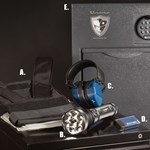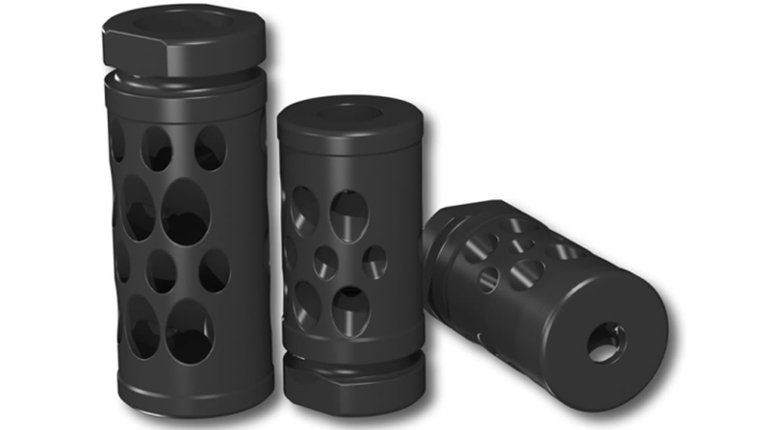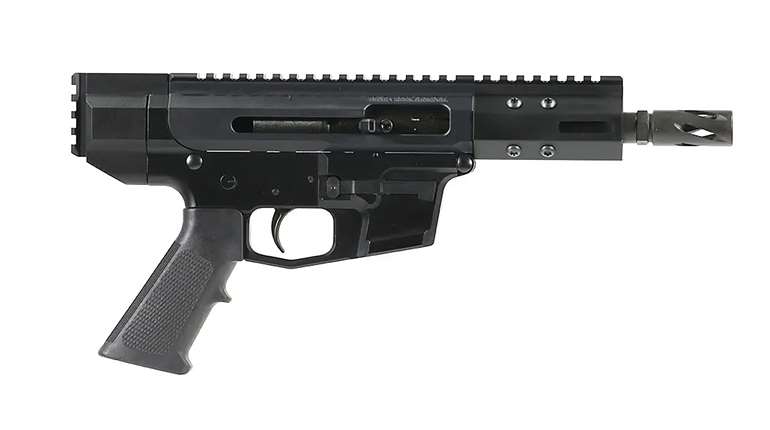
Some folks view firearms as mystical or magical devices belching fire and smoke and roaring like a beast. The fact is, firearms are basically simple machines. They are built from steel, aluminum, polymer and/or wood. Guns contain pins, springs and levers just as does any other man-made machine.
After we remove the mythological aspect from the gun we have a basic machine. In the case of the semi-automatic firearm, the fuel that is driving this machine is the ammunition cartridge.
Every firearm has what is referred to as a "cycle of operation." For the AR-style rifle, this cycle has eight steps: firing, unlocking, extracting, ejecting, cocking, feeding, chambering and locking. Simply put, any unintentional interruption in the cycle of operation is a stoppage.
A stoppage is not necessarily a malfunction due to a broken part or gun. Stoppages can generally be fixed quickly and the weapon put back into firing condition. When teaching stoppage clearing, I find it easiest to classify the most common types of stoppages as Types 1, 2 and 3.
Type 1 Stoppage
It's been said the loudest sound a gun makes is not the boom when a round goes off but the click when you were expecting a boom. In this case, you likely have a Type 1 stoppage or "Failure to Feed/Failure to Fire."
This situation can occur for any number of reasons. The most common cause is operator error. You thought that you chambered a round, but in fact did not. The bolt might be out of battery, or the magazine may not be seated properly. Though technically possible, but extremely rare, you may have a bad round of ammunition.
The good news is the solution to the Type 1 Stoppage is straightforward and easy to perform. 1) Tap the magazine to ensure it is seated. 2) Rack the bolt vigorously to the rear, letting the buffer spring drive the bolt home. 3) Reassess the target to see if you still need to fire.
Yes, we used to teach "Tap, Rack, Bang" until someone figured out we were teaching people to unconsciously or reflexively fire—not a good thing. Each and every time you press that trigger, it needs to be a conscious, purposeful decision. You can't call that bullet back and you own every round you fire.
So, the mantra for a Type 1 malfunction is "Tap, Rack, Reassess." The good news is this fix will clear somewhere in the neighborhood of 90 to 95 percent of stoppages. From a commonality of training aspect, tapping the magazine and racking the charging handle is identical to the loading process for the rifle.
Type 2 Stoppage
The Type 2 Stoppage is also called the "stovepipe." The reason this name is, a half-century ago when this stoppage became prevalent, most people still had wood-burning stoves in their homes and therefore had stovepipes sticking out of their roofs. Today an actual stovepipe is generally only found at a hunting cabin.
Nonetheless, the term for a piece of spent brass caught in the ejection port is still a "stovepipe." In technical terms we could call this a chamber or feed-way obstruction. Regardless of what you call it, a Type 2 stoppage means a piece of fired brass has been extracted from the chamber, but somehow did not clear the ejection port.
The bolt face, driven by the power of the buffer spring, has pinned that piece of brass against the ejection-port wall. The rifle isn't going bang again until we clear this stoppage.
One solution is to take the non-firing or support hand and sweep or wipe the brass out of the ejection port. That fix does work. However, there are three problems with this method. First, you need to first visually confirm you have a Type 2. This requires ample light. We don't always have enough light to see an obstruction.
The second issue is, we don't know for a fact whether a fresh, unfired round was chambered when the stovepipe occurred. Sweeping the offending brass away from the ejection port does not cycle the action and chamber a round.
The third issue, and the biggest one in my opinion, is that the neuromuscular pathway for the brass sweep is different than the tap/rack method for Type 1. As the most common stoppage is a Type 1, if your AR fails to fire when it should, Tap, Rack, Reassess is the fix you should apply. If you instead pause, visually inspect the firearm and then decide to sweep the brass away with your hand, you have wasted time and effort.
To clear a Type 2 stoppage with the AR, refer to the Type 1. Tap the magazine, rack the bolt vigorously and reassess. The only step that I would add is to angle the ejection port toward the ground to let gravity help you.
Type 3 Stoppage
While the failure to feed/fire and stovepipe represent the majority of stoppages encountered with the AR, the Type 3, though rare, must be addressed. The final common stoppage is a double-feed.
A double-feed occurs when two objects attempt to occupy the same space. In this case it's the rifle's chamber. As the chamber is not designed to accept two rounds, this presents a big problem.
The most common type of double-feed is the failure of a spent piece of brass to extract from the chamber and a fresh piece of ammunition is fed in behind it. This stoppage cannot be cleared by tap/rack.
If you've been training diligently, you will first notice a double-feed after your rifle has failed to fire and you attempted to clear it with Tap, Rack, Reassess. Having discovered that you indeed have a Type 3, you need to follow these further steps: Lock, Rip, Rack.
The log jam in your action is being exacerbated by pressure from the buffer spring. First, lock the bolt to the rear. This takes the spring pressure off the stuck round. Then, rip the magazine out, as the magazine is often a contributing factor to a double-feed. Finally, rack the charging handle once, twice, even three times for good measure. This will clear the obstruction nine times out of 10. If it does not, you may need to stick your fingers into the magazine well and sweep out the brass.
With the chamber now cleared, insert a fresh magazine, rack the bolt and reassess to determine if you need to fire. Reading the instructions for clearing a Type 3 actually takes longer than doing it, but it's still going to take a little time.
A highly trained operator can clear a Type 3 in five to 10 seconds. The average person will naturally need more time. If a stoppage occurs in the middle of a fight you have two basic options; transition to a sidearm and keep fighting or seek cover and fix your rifle. The situation will dictate what's appropriate.
Parting Shots
As I mentioned, the most common cause of the stoppage is operator error. We forgot to chamber a round, didn't seat the magazine all the way or took the bolt out of battery with a hastily executed chamber check.
Another big culprit, particularly regarding double-feeds, is used, misused and abused magazines. Magazines will eventually wear out, especially if they are designated as "trainers" and used by multiple shooters. After thousands of rounds, the lips of the AR mag will begin to spread ever so slightly and cause double-feeds. At this point in American history, 30-round AR magazines are plentiful. Purchase several and rotate them regularly. If a mag gets worn out and is causing stoppages, get rid of it. Don't be cheap.
Dirty, dry guns are also to blame a good deal of the time. Remember, a that semi-automatic firearm is a simple machine. Machines run the best when they are clean and properly lubricated—not dry and dirty. You wouldn't run your truck or car engine without oil, would you?
There is quite a bit of hype and rumor about the reliability of the AR. Each year, I train several thousand shooters using M4s and I can tell you, by and large, it comes down to maintenance. Keep your rifles clean and lubricated and they will serve you well. Again, firearms are simple machines. Parts will wear out after tens of thousands of rounds. Get familiar with you rifle. Changing out springs and other moving parts is really not all that difficult if you know what you are doing.
Gear is great, but training is the key. Get out to the range and practice often. Work on the Tap, Rack, Reassess drill. Set up a double-feed and run through the Lock, Rip, Rack technique until it seems almost natural. With practice you can get your rifle back up and running in seconds—and whether your are in a competition or defending your life, every second counts.









































